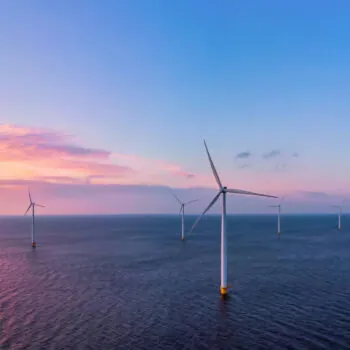Yesterday, the EU notified carmakers that it will impose countervailing duties ranging from 17.4% to 38.1% on imports of Chinese electric vehicles (EVs) starting in July. This decision follows an anti-subsidy probe into Chinese EVs initiated last September and comes after the US’ recent move to increase tariffs on Chinese EVs to 100%. The EU’s decision aims to prevent material injury to its industry from subsidized Chinese EVs but will have long-term consequences for the EU’s transition to a clean economy.
Both the EU and the US have been raising concerns about Chinese overcapacity of electric vehicles and other clean technologies flooding global markets and undermining their domestic industries. Chinese EV manufacturers are estimated to have up to a 30% cost advantage due to massive amounts of state subsidies into the sector. Last month, the Biden administration quadrupled its tariff on imports of Chinese EVs to 100%. In practice, sales of Chinese-made EVs to the US are already negligible, but the move added pressure on Europe to follow suit, as it remained one of the few markets open to Chinese car imports.
Previously, the baseline duty on EVs imported from third countries to the EU was 10%. The European Commission has now announced an additional duty of up to 38.1% on Chinese manufactured EVs, depending on the level of subsidization as calculated by the EU, set to take effect in July. The highest duty also targets companies that refused to comply with the investigation, reflecting a clear response to the lack of transparency from these Chinese companies.
The EU’s move is less aggressive than that of the US. Unlike the US, which has justified its 100% tariff under its favoured Section 301, the EU claims to have based its duties on the outcomes of its subsidy investigation, a due process requirement under WTO rules. It is nevertheless a bold action to take. The EU is much more dependent on trade with China, particularly for its export markets. The subsidy probe has divided Member States for months. While the French are concerned about Chinese EVs flooding the European market, several European carmakers, particularly in Germany and Slovakia, export high-value models to Chinese markets. If, or rather when, China retaliates, it could target these imports. Beyond the car industry, other critical European sectors such as aviation or agriculture could face retaliation from China.
The China subsidy probe reflects not only current geopolitical tensions around China but also internal EU politics around the European elections. European Commission President Ursula Von der Leyen’s re-election campaign message focused on taking action to protect industries, and EV tariffs could be just the start as concerns about Chinese market practices extend to a range of green technologies, including batteries and wind. China’s near dominance in the global market for clean energy components and the processing of critical minerals essential for clean technologies is viewed as posing acute risks to Europe’s economic competitiveness, national security, energy security and climate goals. Moreover, the threat of Chinese economic coercion for political purposes, as in the case of Australia and Lithuania, has further eroded Europeans’ trust in Beijing.
The EU’s duties are designed to level the playing field and protect the EU EV industry from being wiped out. However, without a broader policy strategy to accelerate the transition of the European car sector, these measures could end up hurting European industries and the green transition. To systematically reduce its clean-tech dependence on China while maintaining its pace for the transition, the EU cannot rely solely on trade defence to shield domestic industries. Instead, the EU needs a coherent and credible industrial strategy to bolster the European EV industry and overall competitiveness. This includes not undermining its own policy through a reversal of the EU’s 2035 ban on the sale of new cars with internal combustion engines.
With anti-subsidy investigations likely to proliferate and tougher rhetoric from EU and US leaders against China, fears of a looming trade war are growing. Given its level of dominance in green supply chains, Chinese technologies and supply chains will play a role in the EU’s transition for the foreseeable future. As two of the world’s biggest emitters, the EU and China must continue to jointly address climate change, tackling these issues head-on in bilateral settings to prevent trade tensions spilling over into multilateral climate talks.


